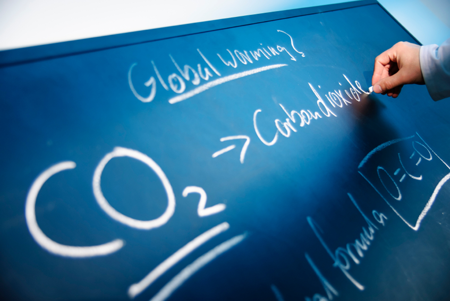
Photo Credit: iStockphoto.com
A paramount global challenge in the 21st century is ensuring safe, reliable, affordable energy for all while protecting the global climate. Governments and business around the world are taking steps to drive the adoption of low-carbon energy. Both the challenges and opportunities are nowhere better reflected than in Asia.
World energy consumption is expected to grow by 40 percent in the next two decades. In Asia, it's expected to double by 2030. Access to energy is vital to sustain economic growth and raise living standards, particularly in emerging economies. But continuing to rely on traditional sources and consumption patterns will mean a calamitous growth in planet-warming carbon emissions.
Globally, there are signs of real progress in increasing investment in low-carbon energy and in setting policies that encourage that investment. After levelling off during the recession years of 2008 and 2009, investment in clean energy is growing again. Investment in renewable power and fuels hit US$257 billion last year, up almost 60 percent from 2009.
China led the world with US$52 billion invested last year. India had the fastest expansion rate for investment of any large renewables market in the world in 2011, with a 62 percent increase to US$12 billion.
In the area of policy, too, countries in Asia are helping to lead the way.
China aims to produce 16 percent of primary energy from renewable sources by 2020 and is driving energy efficiency by tightening standards for appliances, equipment, buildings and vehicles. A large majority of corporate executives we surveyed for a recent report say China has one of the best business climates today for low-carbon innovation due to its rapidly-growing market and policy support.
Korea is offering preferential financing for low-carbon, renewable and efficient technologies, and incentives for the purchase of energy-efficient appliances. A cap-and-trade system to regulate greenhouse gas emissions could be in place as soon as 2015.
Singapore's 2009 Sustainable Singapore Blueprint goals include a strong emphasis on energy efficiency measures across the residential, buildings, industry, and transport sectors.
Japan, long a global leader in energy efficiency, is now struggling to chart a new energy future in the wake of the Fukushima nuclear disaster. A stronger emphasis on renewables will almost certainly be part of the answer.
But while we see progress toward more low-carbon power, there is still a long way to go. The proportion of power generated by renewables globally (excluding large hydro) was just 6 percent last year. In power generation, the fastest growth in fuel sources through 2035 is still likely to be in coal and natural gas, largely in Asia. While expanded use of natural gas will help temper the growth of carbon emissions, in the long term it must be coupled with carbon capture and storage if we are to achieve the deep emission reductions that are needed.
To avoid the worst consequences of climate change, including rising sea levels and more extreme weather, we must do more. And businesses, as the engines of innovation, play a vital role.
First, as the demand for power continues to soar, the need to use that energy wisely is imperative. We must increase efficiency, in our power generation, our transportation and our power usage. For example, buildings are one of the largest opportunities for reducing global energy use and resulting carbon emissions because they account for roughly 40 percent of global energy demand. Using existing technologies and practices, a 22 percent energy savings in commercial buildings could be cost-effectively achieved by 2020.
Second, we need broader deployment of existing low-carbon energy sources. Falling technology costs, especially for wind and solar power, have made these two leading renewable technologies much more competitive with fossil fuel energy.
Finally, we need continued innovation to complete the transition to a low-carbon future. Companies that can bring low-carbon innovations to market quickly and at scale will gain both higher market share over competitors, and also influence over emerging policies and standards. Successful low-carbon innovations not only reduce carbon emissions, they also bring added benefits such as lower operating costs and increased flexibility.
Although reducing emissions is a societal goal, the ultimate success of each innovation hinges on its broad adoption and use in the market, which in turn hinges on a development process attuned to the multidimensional needs of customers and partners across the value chain.
Sustainable energy across the planet is achievable when combining existing technologies with inspiring policies and decisive leadership. In the coming decades, existing markets will change dramatically and new markets will emerge. Becoming a leader in low-carbon innovations can bring competitive advantages to individual companies, and also to entire economies.

The Hon Eileen Claussen is the President of the Center for Climate and Energy Solutions. She will be speaking at the Singapore Energy Summit at the Singapore International Energy Week 2012.
By: the Hon. Eileen Claussen, President, Center for Climate and Energy Solutions